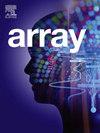Vehicle detection and recognition approach in smart surveillance system: A comparative analysis
IF 4.5
Q2 COMPUTER SCIENCE, THEORY & METHODS
引用次数: 0
Abstract
Vehicle detection and recognition are one of the main research areas of computer vision and image processing. In recent years, the recognition of vehicles from video clips have been a critical component of intelligent transportation systems (IRS's). It is used for the purpose of detecting and monitoring vehicles, capturing their violations, and regulating traffic. This paper addresses the key issue of vehicle detection and recognition, for these two complex datasets, VRiV and UCSD are considered to segregate between vehicle and non-vehicle objects using video analysis. For data analysis we apply basic preprocessing, which includes frame conversion, background subtraction, noise reduction, and resizing. After that, we implement region-of-interest (ROI) extraction and change detection techniques to optimize the ROI. Next step is extraction of main attributes, such as motion direction and motion angle and apply data normalization to improve the equity of the model training. The study assess the Long Short-Term Memory (LSTM) model's efficacy on the data using benchmark metrics such as confusion matrix, precision, recall, accuracy, and F1-score. The proposed system attain an accuracy of 81 % on the VRiV dataset and 83 % on the UCSD datasets which shows the robust performance in terms of recognition rate.
智能监控系统中车辆检测与识别方法的比较分析
车辆检测与识别是计算机视觉与图像处理领域的主要研究方向之一。近年来,从视频片段中识别车辆已成为智能交通系统(IRS)的一个重要组成部分。它用于检测和监控车辆,捕捉其违规行为,并调节交通。本文解决了车辆检测和识别的关键问题,针对这两个复杂的数据集,考虑了VRiV和UCSD使用视频分析来隔离车辆和非车辆目标。对于数据分析,我们应用基本的预处理,包括帧转换、背景减除、降噪和调整大小。然后,我们实现了感兴趣区域(ROI)提取和变化检测技术来优化ROI。下一步是提取运动方向、运动角度等主要属性,并应用数据归一化来提高模型训练的公平性。本研究使用混淆矩阵、精确度、召回率、准确性和f1分数等基准指标来评估长短期记忆(LSTM)模型对数据的有效性。该系统在VRiV数据集上的准确率为81%,在UCSD数据集上的准确率为83%,在识别率方面表现出良好的性能。
本文章由计算机程序翻译,如有差异,请以英文原文为准。
求助全文
约1分钟内获得全文
求助全文

 求助内容:
求助内容: 应助结果提醒方式:
应助结果提醒方式:


